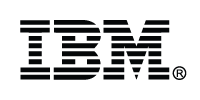Tackling Communication Challenges in Today's Supply Chains
Timely, accurate information exchanges are essential for promptly addressing market uncertainty, responding to disruptions and collaborating to develop solutions. However, supply chain communication challenges are common in today’s business-to-business (B2B) supply networks. Can industry professionals use technology to overcome them?
The State of Communication in Supply Chains
The state of communication between parties within B2B supply chains is substandard. A recent KPMG report revealed many are not on the same page. While 87% of business executives considered transparency critical, 43% reported they had little to no visibility into their tier-one suppliers—much less their extended supply network.
Minor and avoidable issues compound without timely, accurate information exchanges, leading to disorder, miscommunication and poor decision-making. Realistically, this isn’t the type of issue that resolves itself given enough time.
Disruptors are intensifying in frequency and impact. A McKinsey & Company report revealed supply chain disruptions lasting at least one month now happen every 3.7 years, costing 45% of the average organization’s annual profits. With such losses occurring more frequently, prompt action becomes even more pressing.
These communication breakdowns may not wholly be the fault of stakeholders within B2B supply chains. Sometimes, supply chain communication challenges stem from faulty infrastructure. Industry professionals must understand these underlying engineering issues if they ever want to fix this core pain point.
The Science Behind Communication Issues
Delays in information exchanges cannot always be attributed to poor management or stakeholder contention. Non-line-of-sight (NLOS) challenges—typically obstacles and reflections—alter signal trajectory and integrity. For instance, multipath effects can scatter and attenuate the signal, making maintaining consistent communications challenging.
For this reason, the Fresnel Zone—the three-dimensional elliptical region between the transmit and receive antennas—is often compromised in dense urban environments. These obstructions are quantified as a 6dB signal loss, which is the equivalent of halving the distance of signal range in free space.
System compatibility is another common supply chain communication challenge. It is particularly apparent within large networks because integrating new applications or overhauling underlying infrastructure at scale is challenging. Legacy technology and custom-built systems can also exacerbate this issue. Platform incompatibility results in delays and various technical problems.
With incompatibility, the most pressing concern is disparate data flow. Differences in information type, quality or format between stakeholders can result in miscommunications. Discrepancies in transmission and storage also play significant roles. What happens when a misunderstanding leads to silo creation?
The average organization has an estimated 2,000 data silos, each containing information that is inaccessible to other departments or vendors. They hinder the free flow of information, increasing the likelihood of miscommunications, delayed responses and poor decision-making. Since B2B supply chains are time-sensitive, restricting real-time access and analysis may contribute to financial or reputational losses.
How Can B2B Firms Tackle These Challenges?
There are several technological solutions B2B companies can leverage to tackle the supply chain communication challenges plaguing them. While cloud computing may introduce its own challenges, it is less vulnerable to disruption than on-premises storage systems. It also offers greater scalability, enabling firms to respond to rapidly changing market conditions.
The blockchain offers similar benefits but also has the unique advantage of immutability. The consensus mechanism allows no participant to alter data without unanimous agreement. Also, smart contracts can accelerate decision-making and message transmission by automatically executing based on predefined triggers.
For B2B firms relying on a mobile ad-hoc network (MANET)—a decentralized, self-configuring wireless network made up of mobile nodes—understanding NLOS propagation is essential. Procurement professionals will not always have a direct, unobstructed path between the transmitter and receiver. Even moving vehicles can disrupt signal propagation.
In MANET networks, nodes transmit, receive and relay information simultaneously, enabling data to automatically find the optimal route toward its destination. Navigating NLOS challenges expands coverage and improves connectivity, even in highly complex, dynamic environments, helping resolve supply chain communication challenges.
Multiple-input multiple-output (MIMO) waveform technology uses multiple transmission and receiving antennas and techniques like spatial multiplexing to improve throughput without increasing bandwidth or transmit power. This enables seamless transmissions, even in NLOS.
The Role of Compromised Communications
Due to the cybersecurity landscape’s ever-evolving nature, almost all B2B supply chains are prone to cyberthreats. Those who have embraced digitalization are especially vulnerable. Having high-risk information and communication technology systems embedded within fleets improves data collection and sharing but introduces security weaknesses.
Hardware that gathers, processes, transmits, retrieves or stores data—including telematics devices, infotainment systems and internet-enabled nodes—is both an entry point and a target for cybercriminals. Communication can be compromised, deleted or tampered with unless it is properly secured.
In large B2B supply chains, the risk of a breach becomes all too real. One multiparty infiltration causes 26 times the financial damage of the worst single-party breach—the ripple effects last over one year, impacting 75% of downstream victims.
Adopting more efficient platforms to resolve supply chain communication challenges is not enough—B2B business leaders and supply chain professionals must also secure their solutions against would-be hackers. While this observation may seem obvious, many neglect these duties.
One PWC survey revealed that just 23% of business executives report that their cybersecurity teams usually collaborate with other parts of the organization that affect safety. Consistent cooperation between stakeholders is a critical element of meaningful progress.
Tackling Supply Chain Communication Challenges
Supply chain communications are about more than exchanging messages. B2B professionals must be able to share insights and forward newly generated information to evade emerging disruptions and stay on top of rapidly evolving market conditions.
Reliability, availability and responsiveness are essential. Firms must deliver actionable insights to relevant stakeholders at the right time and cost. With the right strategies, they can enable peer-to-peer connections and accelerate information exchanges, ultimately overcoming supply chain communication challenges and enhancing visibility into their supply network.
About the Author

Emily Newton
Emily Newton has eight years of creating logistics and supply chain articles under her belt. She loves helping people stay informed about industry trends. Her work in Supply Chain Connect, Global Trade Magazine and Parcel, showcases her ability to identify newsworthy stories. When Emily isn't writing, she enjoys building lego sets with her husband.






